What Do You Need to Know About Winter Travel?
Guest Bloggers, Nancy Sauerman and Bruce Bachmann
I have gone to conferences in the winter but that involves flights, motels, and schedules arranged by someone else. I have had my share of winter travel within the state for short visits or to care for relatives. During our working years, we took our vacations after school semesters ended and before summer class teaching started. After retirement, we still took vacations in the spring or fall — before and after major gardening and food-preserving time and pre/postseason.
Finally, we took a winter travel vacation in January, mainly to visit our sister-in-law, who has Alzheimer’s. We wanted to spend time with her while she still knew us. As longtime campers, we took our basic camping equipment and supplies. After all, we were going south — way south.
What We Learned About Winter Vacations
The days are short. There is less daylight drive time. Driving in the dark in the lethal cold in the middle of nowhere isn’t smart. And so much of the Midwest and Southwest IS the middle of nowhere! Shorter days also mean less time for walking, hiking, and touring. Businesses and museums often have reduced hours. In tourist areas, some restaurants and many campgrounds tend to be closed for the season. Likewise, services such as restrooms and water sources were closed or unavailable (once because of a water pipe break). Roads and trails were blocked. Knowing all this, we didn’t let our gas tank go below half-full. It was too cold to camp.
Where We Did Stay
We stayed at the northern Arkansas farm of our sister and her husband for a couple of nights. While hiking around the farm and learning about their easements to protect the riverbed and banks, old-growth trees, and going through the market gardens, we wore winter coats and wraps. A stiff headwind buffeted us through Oklahoma as we headed to Palo Duro Canyon in the Texas panhandle to camp. Although we have camped down to 30 degrees, with lows predicted to be 24 degrees that night we decided that was pushing it. Also, that state park has the Red River winding back and forth over the road in half a dozen spots. At that temperature, the River would be ice or the roads icy. Dicey! So, we got a motel in Tucumcari, New Mexico. Off-season rates made it more palatable, and it was certainly safer and warmer.
- With over 300 days of sun, chilis dry easily by braiding them into ristras.
- Xeriscaping saves precious water
- The wide horizon reveals brilliant sunrises.
Blue Norther’
We enjoyed seeing the mountains, including snow-capped ones. Some hikes we took on our way to Las Cruces, NM, included the Valley of Fires lava beds, petroglyphs, and White Sands. All in winter coats. Our brother and his wife hosted us for several days in a comfy setting. Again, we bundled up in winter coats and wraps on our walks, hikes, and trips to the store. Lows at night were in the high teens or low 20s. This was less than an hour from the Mexican border! Winter coats and wraps are cumbersome but better than frostbite. One bonus — no mosquitos, ticks, rattlesnakes, or scorpions! We had only one overcast day and it snowed. So most days we applied sunscreen to our faces; this part of the country has an average of over 325 sunny days per year.
- Snow-covered peaks
- Traveling the iconic Route 66.
- Valley of Fires Recreation site in New Mexico
- Shaped like organs pipes
Wind!
For several days we had high wind warnings. When we finally drove north to Santa Fe, NM, for a few days of culture, history, and adobe architecture, the wind was so strong that we dodged huge tumbleweeds racing across the highway. Whoever was driving would gasp as some, three feet in diameter, even whacked the car. These were not lightweight, stripped-down, bleached tumbleweeds floating across the road. They were full, sturdy balls of Russian thistle whizzing full speed. The wind certainly also cut our gas mileage while we headed west. Our gas mileage was better when we headed back east but the wind wasn’t as strong those days.
Cold Culture
At 7,199 feet above sea level, Santa Fe is the highest elevation state capital. It was cold! One morning we woke to 10 degrees. Needless to say, no camping. The casita where we stayed just a half-mile from downtown had a fully-equipped kitchen, so we were able to cook meals and take breaks between walks to and from the Plaza area with all the museums and historical buildings. Our coats and wraps kept us warm.
- Santa Fe boasts intriguing museums.
- Museum of International Folk Art.
- Classic architecture.
Keeping an Eye on the Weather
As we readied to head home, weather predictions showed a major winter storm brewing over the Great Plains and ready to plunge into the Upper Midwest. So, winter in America means watching the weather and plotting a safe course of travel, which we did. Staying south and east to avoid serious wind chill warnings, we arrived home a half-hour after the first snow of that storm sifted down. We had expected to have to stay another night in a motel but we slept in our bed that night. Phew!
So, short days, cold, wind, and storms. We will think twice before planning another January Road trip.

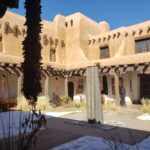
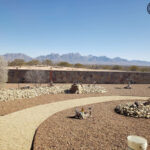
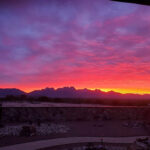
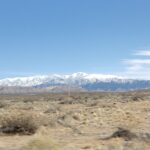
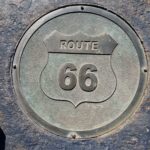
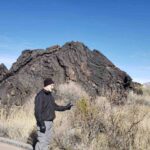
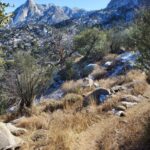
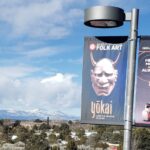
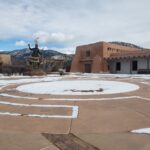
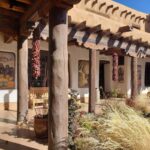

These travelers were very wise. Basically we do not travel in the winter. I know, I know, winter has a beauty all it’s own, but the risk of storms and getting stranded is not in our 82 year old play book. So we prefer late spring, summer and fall. Happy travels!